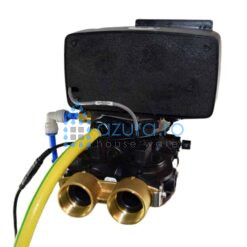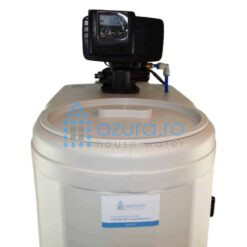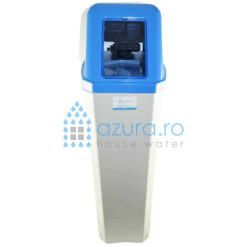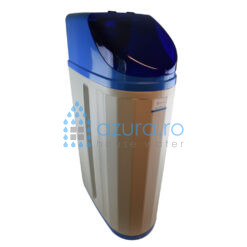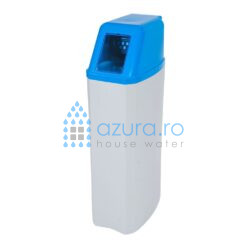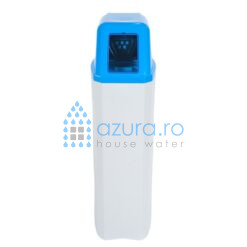Proportional volumetric water softeners for limescale removal
Volumetric water softeners are equipment for limescale removal, which automatically calculates the volume of water softened and at the right time triggers the regeneration of the resin. Every softener has a certain softening capacity, depending on the water hardness and the volume of water filtered/treated.
How does a water softener work?
Water softeners, sometimes also called water softeners, work on the principle of ion exchange. By "pulling" on the cationic resin it stops calcium and magnesium salts, while removing sodium salts from the water. In this way ion exchange takes place. At a certain point the cationic resin (filter medium) is exhausted (loaded with calcium and magnesium salts), at which point regeneration is necessary to soften the water. This regeneration is done with sodium (salt pills). The salt is dissolved in a certain amount of water automatically calculated by the softener. With this brine, the softener automatically regenerates the resin. During regeneration, an ionic exchange also takes place but in the opposite direction, this time the softener removes calcium and magnesium salts from the sewage and "attracts" sodium salts to the resin. After this regeneration, the cationic resin is again able to soften the water.
Proportional volumetric softening stations make substantial savings in salt. This is due to the fact that regeneration occurs only when needed, neither earlier nor later. The volumetric water softener meters every litre of water consumed and in this way commands regeneration only when it is needed. Even if the price of a volumetric water softener is higher than a time-controlled water softener, it is advisable to make such a choice for further savings on salt consumption
In our portfolio there are softeners for any flow, consumption and hardness. We offer technical advice in choosing the right softener. We offer absolutely free, in our office, the testing of your water for hardness determination.




